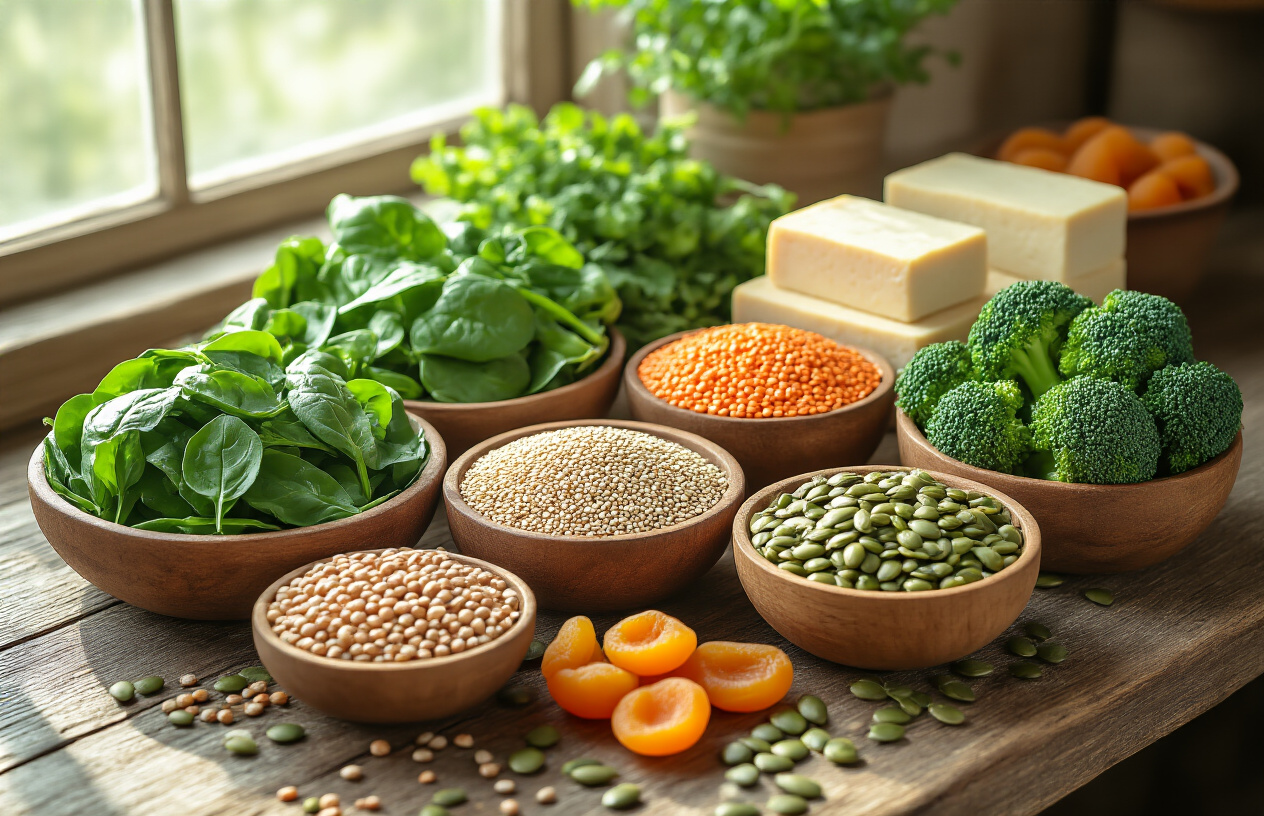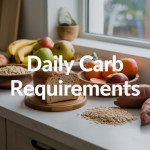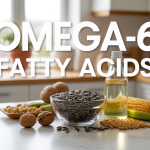Iron plays a crucial role in carrying oxygen throughout your body and maintaining healthy energy levels. This guide is designed for anyone looking to boost their iron intake naturally, whether you’re dealing with low energy, following a plant-based diet, or simply want to eat more nutrient-dense foods.
We’ll explore the best high-iron foods from both animal and plant sources, helping you understand which options your body absorbs most easily. You’ll also discover simple food pairing strategies that can double or triple your iron absorption, plus learn to spot the early warning signs that your iron levels might be running low.
Understanding Iron’s Essential Role in Your Body

Boost Energy Levels and Combat Fatigue
Iron acts as the body’s oxygen delivery system, carrying fresh oxygen from your lungs to every cell in your body. When iron levels drop, your cells can’t get the oxygen they need to produce energy efficiently. This creates that heavy, tired feeling that makes even simple tasks feel overwhelming.
Your red blood cells contain hemoglobin, a protein that depends entirely on iron to bind and transport oxygen. Without enough iron, hemoglobin production slows down, leaving you with fewer oxygen-carrying red blood cells. The result? Your heart works harder to pump blood, your muscles receive less oxygen, and your energy crashes.
People with low iron often describe feeling like they’re running on empty, even after a full night’s sleep. This isn’t just being tired – it’s your body struggling to fuel basic cellular functions that keep you alert and energized throughout the day.
Support Healthy Blood Cell Production
Iron serves as the cornerstone of red blood cell formation in your bone marrow. Every second, your body produces about 2.5 million new red blood cells, and each one requires iron to function properly. Without adequate iron stores, this production line slows down dramatically.
Your bone marrow needs a steady supply of iron to manufacture hemoglobin, which makes up about 65% of your body’s total iron content. When iron becomes scarce, your body prioritizes essential functions, but blood cell production suffers. This leads to smaller, paler red blood cells that can’t carry oxygen effectively.
The process doesn’t stop at red blood cells. Iron also supports the production of myoglobin, a protein that stores oxygen in your muscle tissues. This backup oxygen supply becomes crucial during physical activity, helping your muscles perform efficiently even when oxygen demand increases.
Enhance Cognitive Function and Brain Health
Your brain consumes about 20% of your body’s oxygen supply, making it extremely sensitive to iron deficiency. Iron helps maintain the myelin sheaths that protect nerve fibers, ensuring quick and accurate signal transmission between brain cells.
Low iron levels can fog your thinking, making it harder to concentrate, remember details, or process information quickly. Students and professionals often notice these cognitive changes before physical symptoms appear. Your brain simply can’t operate at peak performance when oxygen delivery becomes compromised.
Iron also plays a role in producing neurotransmitters like dopamine and serotonin, which regulate mood, motivation, and mental clarity. When iron drops, these chemical messengers become imbalanced, potentially affecting your emotional well-being alongside cognitive performance.
Strengthen Your Immune System
Iron powers your immune system’s front-line defenders. White blood cells rely on iron-dependent enzymes to destroy harmful bacteria, viruses, and other pathogens that threaten your health. When iron levels fall short, your immune response weakens significantly.
Your body’s infection-fighting cells need iron to multiply rapidly when threats appear. This quick response helps contain infections before they spread. Iron also supports the production of antibodies, specialized proteins that remember past infections and protect against future exposure to the same pathogens.
Chronic iron deficiency leaves you more vulnerable to respiratory infections, skin problems, and slower wound healing. Your body simply can’t mount an effective defense without adequate iron stores to fuel immune cell activity and maintain protective barriers in your respiratory and digestive systems.
Identify Iron Deficiency Warning Signs Early

Recognize Physical Symptoms That Drain Your Energy
Feeling exhausted despite getting enough sleep? Iron deficiency often shows up as persistent fatigue that doesn’t improve with rest. Your body struggles to transport oxygen efficiently when iron levels drop, leaving you feeling drained throughout the day. This isn’t just being tired after a busy week – it’s a deep, bone-weary exhaustion that affects your daily activities.
Shortness of breath during routine tasks like climbing stairs or carrying groceries signals your heart is working harder to pump oxygen-depleted blood. You might notice your heart racing or pounding during activities that never bothered you before. These symptoms occur because your body compensates for reduced oxygen-carrying capacity by increasing heart rate and breathing.
Restless leg syndrome, cold hands and feet, and brittle or spoon-shaped nails also point to iron deficiency. Your extremities feel cold because blood flow prioritizes vital organs when oxygen levels are low. Unusual cravings for non-food items like ice, starch, or dirt – called pica – represent another telltale sign your body desperately needs iron.
Spot Changes in Your Appearance and Mood
Your mirror reveals important clues about iron status. Pale skin, especially noticeable in your inner eyelids, palms, or nail beds, indicates reduced red blood cell production. Dark circles under your eyes become more prominent, and your complexion may appear washed out or grayish.
Hair changes dramatically with iron deficiency. Strands become brittle, thin, and fall out more than usual. You might notice your hair lacks its normal shine and feels dry to the touch. Severe deficiency can lead to significant hair loss that doesn’t respond to typical treatments.
Mood shifts accompany physical changes. Irritability, difficulty concentrating, and brain fog become daily struggles. You might find yourself snapping at family members or coworkers over minor issues. Memory problems and an inability to focus on tasks that once came easily signal your brain isn’t getting adequate oxygen. Depression and anxiety often worsen with iron deficiency, creating a cycle where poor nutrition and low energy feed into negative emotions.
Understand Risk Factors That Increase Your Vulnerability
Certain groups face higher iron deficiency risks due to biological and lifestyle factors. Women of reproductive age top the list because monthly menstruation depletes iron stores. Heavy periods dramatically increase this risk – if you’re changing protection every hour or bleeding for more than seven days, you’re losing significant amounts of iron.
Pregnancy creates enormous iron demands as blood volume increases and the developing baby requires iron for growth. Breastfeeding mothers continue to need extra iron to support milk production and replenish postpartum losses.
Growing children and teenagers need substantial iron for development, yet many don’t consume adequate amounts. Teenage girls face double jeopardy with growth spurts and the onset of menstruation.
Dietary choices significantly impact iron status. Vegetarians and vegans must work harder to meet iron needs since plant-based iron is less readily absorbed than iron from meat sources. Frequent blood donors, people with gastrointestinal conditions like celiac disease or inflammatory bowel disease, and those taking certain medications face increased risks.
Athletes, particularly endurance runners, lose iron through sweat and may experience “foot strike hemolysis” where red blood cells break down from repeated impact. Regular aspirin use, antacids, and proton pump inhibitors can interfere with iron absorption, creating deficiency even with adequate dietary intake.
Top Animal-Based Iron Sources for Maximum Absorption

Red Meat Options That Deliver High Iron Content
Beef stands out as one of the most reliable sources of heme iron, the form your body absorbs most easily. A 3.5-ounce serving of lean beef provides approximately 2.6 milligrams of iron, covering about 14% of your daily needs. The darker the meat, the higher the iron content – this means cuts like chuck roast and sirloin pack more iron than lighter cuts.
Ground beef offers convenience without sacrificing iron content. Choose lean ground beef (85% lean) for a balance of iron and lower fat content. A quarter-pound burger delivers roughly 2.2 milligrams of iron while satisfying your protein requirements.
Lamb deserves recognition for its impressive iron profile. A serving contains about 1.9 milligrams of iron, plus it’s rich in zinc and vitamin B12, which work together to support iron absorption and utilization.
| Meat Type | Iron Content (per 3.5 oz) | % Daily Value |
|---|---|---|
| Lean Beef | 2.6 mg | 14% |
| Ground Beef (85% lean) | 2.2 mg | 12% |
| Lamb | 1.9 mg | 11% |
| Pork Tenderloin | 1.4 mg | 8% |
Organ Meats That Provide Exceptional Nutritional Value
Organ meats represent the ultimate iron powerhouses, delivering concentrations that far exceed regular muscle meat. Beef liver tops the charts with an astounding 30 milligrams of iron per 3.5-ounce serving – that’s more than 150% of your daily iron needs in a single portion.
Chicken liver offers a milder taste while still packing 13 milligrams of iron per serving. This makes it an excellent entry point for those new to organ meats. You can easily incorporate chicken liver into pâtés, sautéed dishes, or even blend small amounts into ground meat recipes.
Kidney and heart provide substantial iron content too. Beef kidney contains about 12 milligrams per serving, while beef heart delivers approximately 7 milligrams. These organs also supply abundant B vitamins, particularly B12, which supports healthy red blood cell formation.
Creative ways to include organ meats:
- Mix ground liver into meatloaf or burgers (start with 10-20% ratio)
- Prepare liver and onions as a weekly iron boost
- Add diced heart to stews and slow-cooked dishes
- Make homemade pâté for iron-rich appetizers
Seafood Choices Rich in Bioavailable Iron
Oysters reign supreme among seafood iron sources, delivering an impressive 16.5 milligrams per 3.5-ounce serving. Raw oysters provide the highest concentration, but cooked varieties maintain excellent iron levels while offering food safety benefits.
Sardines punch above their weight class, providing 2.9 milligrams of iron per serving along with omega-3 fatty acids and calcium. Canned sardines offer convenience and longer shelf life, making them perfect for quick meals and salads.
Tuna, particularly the darker varieties like bluefin, contains about 1.3 milligrams of iron per serving. Fresh tuna steaks provide slightly more iron than canned versions, but both contribute meaningfully to your daily intake.
Shellfish deserve special mention for their iron density. Mussels contain approximately 6.7 milligrams per serving, while clams provide around 3.0 milligrams. These mollusks also supply zinc, which enhances iron absorption.
Top seafood iron sources:
- Oysters: 16.5 mg per 3.5 oz
- Mussels: 6.7 mg per 3.5 oz
- Sardines: 2.9 mg per 3.5 oz
- Clams: 3.0 mg per 3.5 oz
- Tuna: 1.3 mg per 3.5 oz
The heme iron in these seafood options absorbs 2-3 times more efficiently than plant-based iron, making them particularly valuable for people with higher iron needs or absorption challenges.
Plant-Based Iron Foods That Power Your Health

Legumes and Beans for Sustained Iron Intake
Legumes pack a powerful iron punch while delivering protein, fiber, and essential nutrients. Black beans lead the charge with 3.6 mg of iron per cup, followed closely by lentils at 6.6 mg per cup when cooked. Chickpeas, kidney beans, and navy beans each contribute around 3-5 mg per serving, making them excellent choices for weekly meal planning.
The beauty of legumes lies in their versatility and affordability. White beans work perfectly in hearty soups, while black beans shine in Mexican-inspired dishes. Lentils cook faster than most beans and absorb flavors beautifully in curries, stews, and salads. Red kidney beans add substance to chili, and chickpeas transform into creamy hummus or crispy roasted snacks.
Cooking dried beans from scratch maximizes iron content compared to canned versions, though rinsed canned beans still provide substantial nutrition. Soaking beans overnight and cooking them with iron-rich vegetables like spinach or tomatoes creates iron-dense meals that satisfy hunger for hours.
Dark Leafy Greens That Maximize Nutrient Density
Spinach stands out as an iron superstar, delivering 6.4 mg per cooked cup – that’s more than many meat sources. Swiss chard provides 4 mg per cooked cup, while kale offers 1.1 mg along with vitamin K and folate. These greens become more iron-rich when cooked, as heat breaks down cell walls and concentrates nutrients.
Baby spinach works wonderfully in smoothies, masking its taste while boosting iron content. Mature spinach leaves hold up better in sautéed dishes, soups, and pasta sauces. Swiss chard’s colorful stems add crunch to stir-fries, while the leaves wilt beautifully into grain bowls.
Arugula, though lower in iron at 0.5 mg per cup, brings a peppery flavor that pairs well with other iron-rich ingredients. Collard greens provide steady iron while offering a hearty base for wraps and rolls. The key is eating these greens regularly rather than occasionally.
Iron-Fortified Grains and Cereals for Daily Nutrition
Many breakfast cereals contain 18 mg of iron per serving – 100% of the daily value for most adults. Fortified oats, wheat-based cereals, and quinoa provide convenient ways to meet iron needs, especially for busy mornings. Reading nutrition labels helps identify the highest iron content options.
Fortified whole grain breads contribute 1-2 mg per slice, while enriched pasta provides around 2 mg per cooked cup. These staple foods make iron intake effortless when incorporated into regular meals. Brown rice, though naturally containing less iron, becomes more nutritious when combined with iron-rich toppings.
Quinoa deserves special mention as a complete protein containing 2.8 mg of iron per cooked cup. This ancient grain works in breakfast bowls, lunch salads, and dinner sides. Bulgur wheat and amaranth also provide decent iron levels while adding texture and nutty flavors to meals.
Nuts and Seeds That Boost Iron Naturally
Pumpkin seeds top the charts with 4.2 mg of iron per ounce, making them perfect for snacking or sprinkling on salads. Sesame seeds and tahini provide around 1.3 mg per tablespoon, while sunflower seeds offer 1 mg per ounce along with healthy fats and vitamin E.
Cashews, pistachios, and almonds each contribute 1-2 mg of iron per ounce. Pine nuts add richness to pesto while providing iron, and hemp seeds blend seamlessly into smoothies with their mild, nutty taste. These portable options make excellent between-meal snacks.
Creating your own trail mix with iron-rich nuts and seeds ensures steady iron intake throughout the day. Nut butters work well in smoothies, on toast, or as dips for iron-rich fruits like dried apricots. Grinding seeds into powders helps the body absorb their iron more easily.
Maximize Iron Absorption with Smart Food Combinations

Vitamin C Rich Foods That Enhance Iron Uptake
Vitamin C acts like a powerful iron absorption booster, transforming hard-to-absorb iron into forms your body can easily use. When you pair iron-rich foods with vitamin C sources, you can increase iron absorption by up to 300%. This partnership works especially well with plant-based iron, which your body typically finds challenging to absorb.
The best vitamin C companions for your iron-rich meals include citrus fruits like oranges, grapefruits, and lemons. Berries pack a double punch – strawberries, raspberries, and blackberries not only taste great but significantly boost your iron uptake. Bell peppers, particularly red and yellow varieties, contain more vitamin C than most citrus fruits and pair beautifully with iron-rich vegetables.
Tropical fruits bring both flavor and function to your iron game. Kiwis, pineapples, and mangoes contain impressive amounts of vitamin C while adding natural sweetness to meals. Don’t overlook everyday vegetables like tomatoes, broccoli, and Brussels sprouts – they’re vitamin C powerhouses that blend seamlessly into iron-rich dishes.
| Food | Vitamin C Content (per 100g) | Best Iron Pairing |
|---|---|---|
| Red Bell Pepper | 190mg | Spinach, lentils |
| Kiwi | 93mg | Fortified cereals |
| Strawberries | 89mg | Tofu, quinoa |
| Orange | 53mg | Beans, dark leafy greens |
Foods to Avoid That Block Iron Absorption
Certain foods and beverages can sabotage your iron absorption efforts by binding to iron and preventing your body from using it effectively. Coffee and tea top the list of iron blockers – their tannins can reduce iron absorption by up to 60% when consumed with meals. If you can’t skip your morning coffee, wait at least two hours after eating iron-rich foods.
Dairy products create another absorption roadblock. The calcium in milk, cheese, and yogurt competes directly with iron for absorption in your digestive system. While both minerals are essential, timing matters when you’re trying to maximize iron uptake.
Whole grains and legumes contain compounds called phytates that naturally bind to iron and other minerals. While these foods offer valuable nutrients, soaking, sprouting, or fermenting them can reduce their iron-blocking effects. Eggs contain a protein that can inhibit iron absorption, so avoid eating them alongside your iron-rich meals.
Major Iron Absorption Blockers:
- Coffee and black tea (wait 2+ hours after iron-rich meals)
- Dairy products (separate by 1-2 hours)
- Whole grain cereals and bran
- Soy products (except fermented varieties)
- Red wine and some medications
Timing Your Meals for Optimal Iron Benefits
Strategic meal timing can make the difference between adequate iron absorption and iron deficiency. Your body absorbs iron most efficiently when your stomach is relatively empty, making breakfast or between-meal snacks ideal times for iron-rich foods. However, this doesn’t mean you should avoid combining iron with other foods entirely.
Plan your iron-focused meals around a 2-hour window away from calcium-rich foods and beverages. If you eat iron-fortified cereal for breakfast, skip the milk and use plant-based alternatives instead. Save your calcium-rich yogurt or cheese for a mid-morning snack, well after your iron has had time to absorb.
Your body’s natural iron absorption patterns also matter. Iron absorption tends to be higher in the morning and decreases throughout the day. Take advantage of this by front-loading your iron intake during earlier meals when your absorption capacity is at its peak.
Consider splitting your iron intake across multiple smaller meals rather than consuming large amounts at once. Your body can only absorb a limited amount of iron at one time – typically around 10-15mg per meal. Spreading iron-rich foods throughout the day ensures you’re not overwhelming your absorption capacity while maintaining steady iron levels.
Optimal Timing Strategy:
- Morning: Iron-rich foods with vitamin C
- Mid-day: Light iron sources with vegetables
- Evening: Focus on other nutrients, minimal iron
- Snacks: Iron-fortified foods between meals

Iron plays a crucial role in keeping your energy levels up and your body running smoothly. When you don’t get enough, your body sends clear warning signs like fatigue and weakness that you shouldn’t ignore. The good news is that both meat-eaters and vegetarians have plenty of excellent options to boost their iron intake, from lean meats and seafood to spinach, beans, and fortified cereals.
Getting more iron isn’t just about eating the right foods – it’s about eating them the right way. Pairing iron-rich foods with vitamin C sources like citrus fruits or bell peppers can dramatically improve how much iron your body actually absorbs. Start by adding one or two high-iron foods to your daily meals, and pay attention to how these simple changes make you feel. Your energy levels and overall health will thank you for making iron a priority in your diet.














